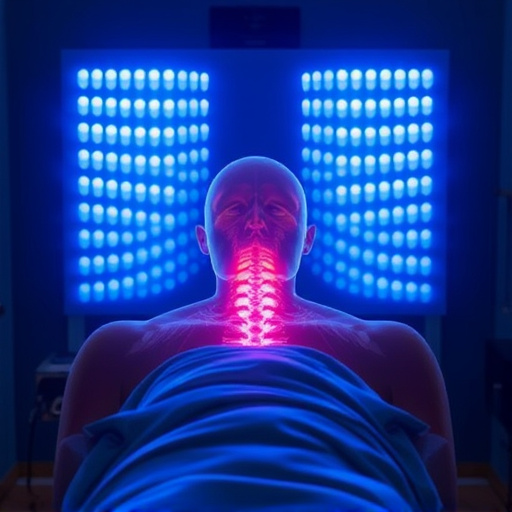Repetitive Strain Injury (RSI) is a common work-related condition caused by repetitive tasks. Early signs include discomfort, stiffness, and pain that worsen with activity. Prevention and management involve ergonomic workplace adjustments like adjustable furniture, posture awareness, and employee education on RSI risks and signs. Implementing these measures reduces the likelihood of chronic pain and disability associated with RSI.
Workplace modifications are essential to combat the growing concern of repetitive strain injury (RSI), a common yet debilitating condition affecting millions. This article delves into the world of RSI, exploring its causes and symptoms to better understand this modern-day occupational hazard. We then provide practical solutions, focusing on designing ergonomic workspaces, implementing preventative measures, and educating employees to foster a healthier work environment and reduce RSI instances.
- Understanding Repetitive Strain Injury: Causes and Symptoms
- Designing an Ergonomic Workspace: Essential Modifications
- Implementing Preventative Measures and Employee Education
Understanding Repetitive Strain Injury: Causes and Symptoms

Repetitive Strain Injury (RSI) is a common condition affecting many individuals, particularly those in professions that require repetitive tasks. It’s characterized by discomfort or pain in muscles, nerves, tendons, and other soft tissues, often resulting from prolonged or repeated activities. These activities can include typing, using a computer mouse, or manual labor, leading to symptoms such as stiffness, aching, numbness, or tingling sensations. Over time, these repetitive actions can cause inflammation and damage to the affected areas, resulting in chronic pain and reduced functionality.
The onset of RSI can be gradual, with symptoms initially appearing as mild discomfort that worsens with continued activity. Ignoring these early signs can lead to increased severity and potential long-term disability. Therapeutic exercises, functional rehabilitation, and proper workplace adjustments are crucial in managing and preventing RSI. By implementing ergonomic solutions and promoting awareness about correct posture and movement, chronic pain relief can be achieved, allowing individuals to continue their work with reduced strain.
Designing an Ergonomic Workspace: Essential Modifications

Designing an ergonomic workspace is a crucial step in reducing the risk of repetitive strain injury (RSI). Essential modifications include ensuring proper posture through the use of adjustable desks and chairs, as well as incorporating support for the neck and upper back. This can be achieved with tools like lumbar supports and adjustable monitor stands that align eyes at a comfortable level, alleviating neck pain relief.
Furthermore, it’s important to minimize strain on wrists and hands by using ergonomic keyboards and mouse pads that encourage neutral wrist positions. Adequate lighting and the proper arrangement of equipment can also prevent eye strain, a common component in post-injury care following auto accidents or other traumatic events. These thoughtful adjustments contribute to an overall more comfortable and productive work environment, facilitating smoother auto accident recovery while aiming to prevent RSI altogether.
Implementing Preventative Measures and Employee Education

Implementing preventative measures and employee education plays a pivotal role in reducing instances of repetitive strain injury (RSI) within the workplace. Companies should invest in ergonomic assessments to identify potential hazards and design workstations that promote proper posture and reduce muscle tension. Regular breaks, along with stretching exercises tailored to specific job roles, can significantly mitigate risks associated with prolonged periods of static work.
Educating employees about RSI is equally important. Workshops and training sessions focused on recognizing early signs, understanding causes, and adopting best practices for task execution can foster a culture of proactive pain management. Encouraging open communication regarding discomfort or concerns further enables timely intervention, potentially preventing the progression to more severe conditions and the need for extensive rehab services.
By implementing ergonomic design principles, educating employees on best practices, and fostering a culture of prevention, organizations can significantly reduce the risk of repetitive strain injury (RSI) in the workplace. These modifications not only enhance employee well-being but also boost productivity and create a more sustainable work environment. Adopting simple yet effective strategies can lead to substantial improvements, ensuring a healthier and happier workforce.














